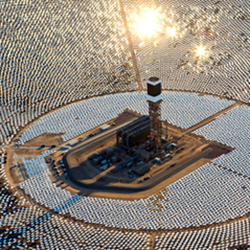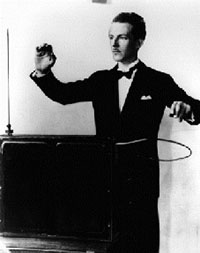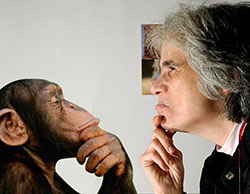| back to current program | ||
| 2014 | ||
| September 8, 2014 Stoney’s British Pub |
 Eric L. Hume, MD Eric L. Hume, MDPenn OrthopaedicsPerelman SOM, University of Pennsylvania “Adventures and Misadventures in Materials and Biology: 50 Years of Hip Replacement Progress” Hip replacement is a spectacularly successful operation to relieve pain from hip arthritis. Replacement offers high success rates and very good pain control, and allows high levels of recreation and work activity. It is a gold standard for successful surgical treatment. The development history is an interesting story of intuition, engineering methodology, materials development and selection, and biology. As most stories go, replacement was born from the mind of a visionary, steadily progressed with careful consideration of failures, took surprising leaps forward, but also saw catastrophes resulting from well-considered new concepts. We will start at the beginning, touch on some of the more interesting and important of these chapters, and end with where we are now and where I think we need to go. |
|
| September 3, 2014 Saint Declan’s Well |
 Matthew J. Lazzara Matthew J. LazzaraCBE, University of Pennsylvania “Personalized Medicine for Cancer” Over the last decade, an improved ability to sequence tumor DNA has been leveraged to identify genetic mutations that promote tumorigenesis and resistance to therapy. In an increasing number of cancer settings, sequencing individual patient DNA now allows for the optimization of therapeutic regimens by including drugs that target specific mutant proteins. This talk will highlight several examples of the successful application of this personalized medicine approach as well as examples of tumor adaptation to outsmart even the best available personalized approaches. The talk will also cover computational modeling approaches being developed by engineers to gain quantitative and predictive understanding of the biochemical processes that dictate cancer cell response to therapy. |
|
| October 6, 2014 Stoney’s British Pub |
 Dillon Brout Dillon BroutPhysics & Astronomy, University of Pennsylvania “Advances in Race Car Vehicle Dynamics and Race Strategy” With ever increasing amounts of data provided by sensors on race tracks and race cars, in order to succeed in sports car racing it has become imperative to invent insights, algorithms, and strategies to create an edge over competitors. With Bentley Motorsport North America and Dyson Racing Team Bentley, we have led a number of innovative analyses to optimize the vehicle’s handling for each on-track scenario as well as developed algorithms to predict optimal race strategy in real time. The talk will highlight several of these innovations as well as cover an introduction to the physics of race cars. |
|
| October 15, 2014 Saint Declan’s Well |
 Igor Bargatin Igor BargatinMechanical Engineering and Applied Mechanics, University of Pennsylvania “Producing Solar Electricity by Boiling Water … and Electrons!” Humanity generally relies on two methods to produce solar electricity: (1) photovoltaic devices, a.k.a. solar cells, which convert sunlight directly to electricity, and (2) solar thermal power plants, which focus sunlight to produce high temperature heat, which can then be used to power steam turbines. I will talk about the relative advantages and disadvantages of the two technologies and show some recent examples, including the controversial mirror array recently opened at Ivanpah, CA. I will then talk about the alternative methods of using the high temperature heat, which rely on evaporation of electrons rather than water and which can be used to produce electricity at a much smaller scale than the large mirror installations. |
|
| November 5, 2014 Saint Declan’s Well |
 David Salas-de la Cruz, Ph.D., EIT David Salas-de la Cruz, Ph.D., EITRutgers University, Camden “How 3-D Printing Can Disrupt the Status Quo” What is a 3D printer? A 3D printer is a tool and a process of making 3D-dimensional objects from computer aided design (CAD) models. The process deposits a polymeric material using layer-by-layer deposition technique by mean of a micro extrusion system. Charles Hull patented this stereolithography technique in 1986 and it was not until 2005 that the process reached stream-media by an open source model. The process allows for a rapid deposition of liquid plastic into solid object. The process reduces the development and manufacturing preparation cost by 70% and speed-up time to market. It allows startups, industries and communities to develop custom-made objects and prototypes at low cost with the potential of solving local community problems. Nicolas Jones, science critic for Nature, stated, “Three-dimensional printers are opening up new worlds to research”. In last few months, the market has seem the development of 3D-printed electric vehicles, microscopes and medical devices. The 3D-printed electric vehicle can be built in no more than 2 days and a 1000x microscope can be built for less than 1 dollar. It is an excitement to be looking at a new era of co-creation and development, for which I called as the Age of Technical Realization. It is unquestionable that 3D printers has the potential to revolutionize material design, manufacturing and medical technology locally and globally. Now is up to the public to embrace it and drive change. |
|
| November 10, 2014 Stoney’s British Pub |
 Karlis Adamsons Karlis AdamsonsAxalta Coating Systems “Art Preservation Over the Last 5000 Years” Art conservation is not a recent concept; the need for protecting, cleaning and repairing works of art has been with us for thousands of years. The intent of this presentation is to provide a brief overview of the various categories of art and how efforts in preservation and conservation were implemented. Examples will include paintings, drawings, statues, carvings, prints, relics, illustrations, and photography. Case studies will range from (1) Early man’s cave paintings depicting life and worship that were located in places away from the elements and associated degradation, (2) Materials used in and surface treatments applied to paintings, statues, carvings, prints and photographs, and (3) Use of protective structures (glass, plastic, metal, wood) enclosures and controlled environments throughout the centuries and up to current times. Work with Art Conservators Eleonora Nagy (Guggenheim, Independent) and Kate Moomaw (Guggenheim) will be referenced among the examples.Also, a brief look at today’s “analytical toolbox” will be provided which assists artists as well as those charged with preservation and conservation of art in all of its glory and forms. This presentation will give a snapshot of analytical testing used to obtain a more detailed understanding of the chemical composition of general paint/coating systems as a function of the application environment, formulation, cure conditions, and exposure/storage history. |
|
| December 8, 2014 Stoney’s British Pub |
 Alain Plante Alain PlanteEarth & Environmental ScienceUniversity of Pennsylvania “The Carbon Beneath Our Feet” There is more carbon stored in the Earth’s soils than in the atmosphere and plant biomass combined, making it the largest active terrestrial carbon pool. In addition, there is six times more carbon exchanged annually between soils and the atmosphere, primarily as carbon dioxide (CO2), compared to annual fossil fuel emissions. Soil, therefore, represents an important component of the global carbon cycle and yet as DaVinci is quoted “we know more about the movement of celestial bodies than about the soil underfoot”. I will describe the various properties and processes that affect the permanence and vulnerability of carbon in soils, and demonstrate how these control the role of soils in the global carbon cycle and in sustainable agriculture and land use. IMAGE: Simplified Representation of the Global Carbon Cycle. (US DOE. 2005. Genomics:GTL Roadmap, DOE/SC-0090, U.S. Department of Energy Office of Science. (p. 34)
|
|
| December 10, 2014 Saint Declan’s Well |
 Nicholas Kybert Nicholas KybertPhysics & AstronomyUniversity of Pennsylvania “Nanotube ‘noses’: Putting Sniffer Dogs out of Business” As an all-surface material with environmentally-sensitive electrical properties, carbon nanotubes provide a unique platform for the fabrication of sensors that can detect subtle odor differences and trace chemical residues quickly and reproducibly. This talk will cover advances in scalable fabrication of the devices and their application to challenges ranging from the detection of traces of explosives to ‘smelling’ cancer. While these experiments are still being conducted in the research laboratory, the opportunities and potential real-world applications that could emerge from this work are wide-ranging and highly impactful. |
|
| 2015 | ||
| January 19, 2015 Stoney’s British Pub |
 Stewart Ramsey Stewart RamseySr. Principal, I H S Global Inc. (Formerly WEFA Inc. Warton Econometric Forecasting Associates) “Down on the Farm – Practical Opportunities to Reduce Agricultural Greenhouse Gas Emissions” Stewart works as a consultant for I H S Global in their agricultural services practice, most recently focusing on agricultural sustainability and much of that work is leveraged under the title of “Field to Market – the Alliance for Sustainable Agriculture.”Stewart will present on some of the practical greenhouse gas work that is occurring in agriculture. Agriculture accounts for roughly 8% of greenhouse gas emissions in the United States but the sector has a disproportionate share of methane and nitrous oxide emissions. Researchers are working hard to help the agriculture sector realize its opportunities to reduce emissions of global warming gases. Please join us to learn about practical applications of greenhouse gas research in agriculture. |
|
| January 21, 2015 Saint Declan’s Well |
 Doug Durian Doug DurianPhysics, University of Pennsylvania “Grains of Physics” Sand is a problem. At the beach it’s fun to scoop and pour, and to make sandcastles. But it’s hard to walk on and it sticks everywhere, plus those sandcastles start crumbling right away. The beach can turn to quicksand, and sandy bluffs can collapse in avalanches. Similar problems arise in desert, lunar, and Martian environments. Industries struggle with processing food grains, pharmaceutical powders, minerals for making ceramics and concrete, as well as with coal and geologic formations holding oil and gas. In short, we need to deal with granular materials to secure our food, medicine, shelter, and energy. Unfortunately, lots of things still go wrong. At a basic level, we lack a good understanding of how “sand” either flows or jams up under applied forces. This is a mechanics problem, and it is difficult because unexpected behaviors emerge for large collections of even the simplest objects like grains. I’ll survey this background, explain why physicists have latched onto “sand” as a cutting-edge research topic, and describe some research from my own laboratory on impact cratering and intermittent avalanche flows. |
|
| February 16, 2015 Stoney’s British Pub |
Bob Stark University of Delaware “Benjamin Franklin, Scientist and Inventor” |
|
| February 18, 2015 Saint Declan’s Well |
 Eric Schelter Eric SchelterChemistry, University of Pennsylvania “Rare Earth Metals: I-phones to Alien Life” The rare earths elements: La–Lu, Y and Sc are irreplaceable components of compact fluorescent light bulbs, wind turbines generators, and hybrid and electric vehicles. For application, the rare earths must be separated into pure compounds from their composite ores. China currently produces ~90% of all rare earths materials, though its geological holdings amount to ~37% of the estimated total global supply. The global market for rare earth elements went through a crisis in 2011 due to a reduction of export quotas by the Chinese government. The talk will encompass the many applications of rare earths in modern society, the current global supply chain and outlook for this critical class of elements. |
|
| March 9, 2015 Stoney’s British Pub |
 Carl Grossman Carl GrossmanPhysics, Swarthmore College “The Theremin & Early Electronic Music” Lev Termen, aka Leon Theremin was a brilliant electronic engineer and inventor. Besides developing some of the earliest applications of precision high frequency measurements (RF, radio frequency), he invented the first electronic musical instrument, the “therphone,” more commonly known as the “Theremin.” In the late 20s, Theremin was touring and performing electronic music in venues such as Carnegie Hall and the Academy of Music. Composers, accomplished musicians, and the public were fascinated by Theremin and his inventions, but by the early 30s, he fell into obscurity and financial disarray. Finally, in 1938, he returned to Russia and ultimately a labor camp (Gulag) in Siberia. He resurfaced after the fall Soviet Union and was able to return to the US through of the efforts of electronic music enthusiasts such as John Chowning, director of Computer Research in Music and Acoustics at Stanford University, and Robert Moog of synthesizer fame. Carl will bring and demonstrate a Theremin. |
|
| March 18, 2015 Saint Declan’s Well |
 Carlos Perez Carlos PerezMSE, University of Pennsylvania “The Missing Piece: Energy Storage for a Sustainable World” As a result of a deepening agreement of the negative environmental impact of non-renewable (fossil) energy sources, the search is on for alternatives to replace them. A fundamental problem is the storage of energy in a form suitable for its use in scales both industrial and personal, from the Megawatts to the Milliwatts. This talk will overview some of the active areas of research, and the problems and promises of specific technologies. |
|
| April 8, 2015 Saint Declan’s Well 6:30pm* special time |
 Dillon Brout Dillon BroutPhysics & Astronomy, University of Pennsylvania “Advances in Racecar Dynamics and Race Strategy” With ever increasing amounts of data provided by sensors on race tracks and race cars, in order to succeed in sports car racing it has become imperative to invent insights, algorithms, and strategies to create an edge over competitors. With Bentley Motorsport North America and Dyson Racing Team Bentley, we have led a number of innovative analyses to optimize the vehicle’s handling for each on-track scenario as well as developed algorithms to predict optimal race strategy in real time. The talk will highlight several of these innovations as well as cover an introduction to the physics of race cars. |
|
| April 13, 2015 Stoney’s British Pub |
 Struan F.A. Grant Struan F.A. GrantPediatrics, Perelman School of Medicine, University of Pennsylvania “Obesity and Type 2 Diabetes ARE Genetic: Successes from Genome Wide Scans” Struan has been conducting human genomics research for over 15 years in locations including Scotland, Australia, Iceland and, most recently, the US. The highlights of his career include the discovery of the strongest associated gene with type 2 diabetes reported to date and leading the largest international effort to characterize genes influencing common childhood obesity.He will discuss his research in simple language and show how it is easier to study type 2 diabetes and obesity in children due to their shorter exposure to the environmental factors that can complicate analyses in adults. |
|
| June 1, 2015 Stoney’s British Pub |
 Janet Monge Janet MongeAnthropology, University of Pennsylvania “Forensic Anthropology” The basic analytic tool kit of forensic anthropologists is applied to 3 very different case studies. Dealing with decomposed or partially decomposed human remains presents a special set of challenges to anthropologists working in forensics. Indeed, in only about 25% of cases can anthropologists contribute in significant ways to forensic cases – contra the popular lore as portrayed in TV shows like BONES. This presentation will include discussions of the limitations of forensic anthropology and include cases in which the forensic anthropologist have been wrong in their assessment of the remains. |
